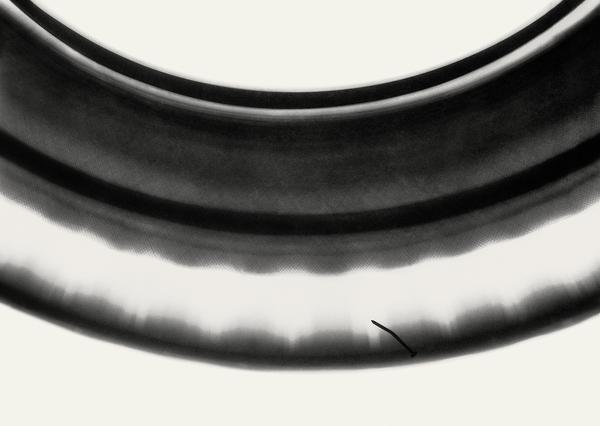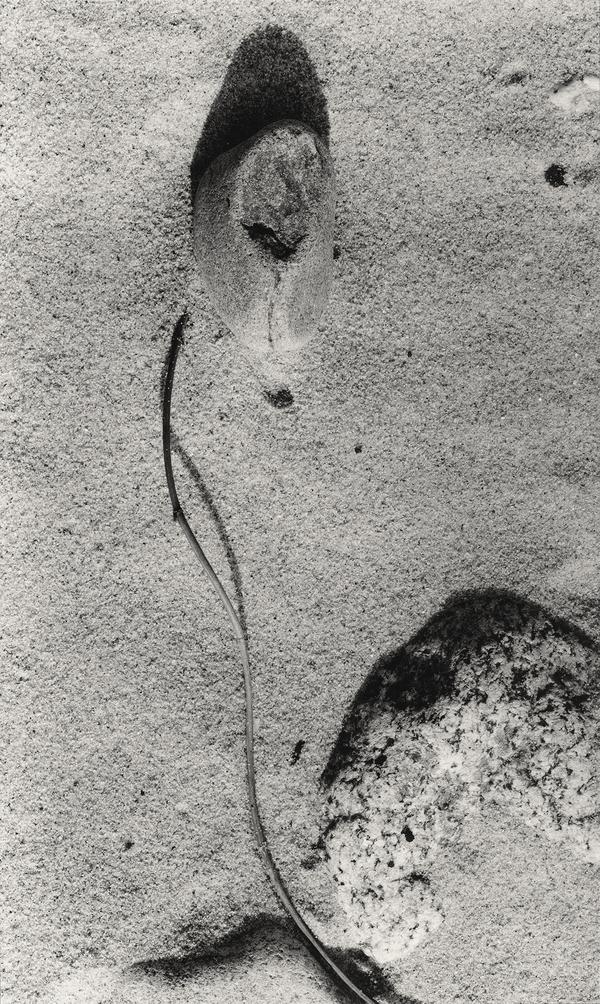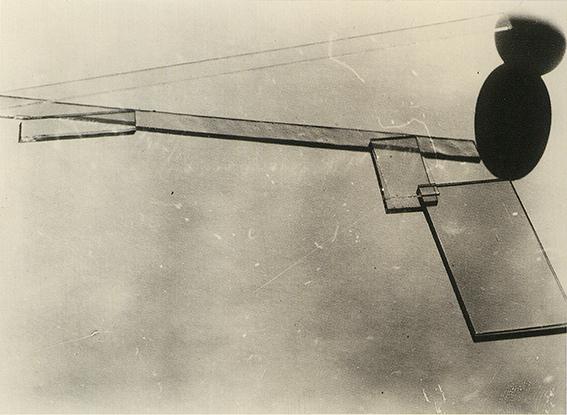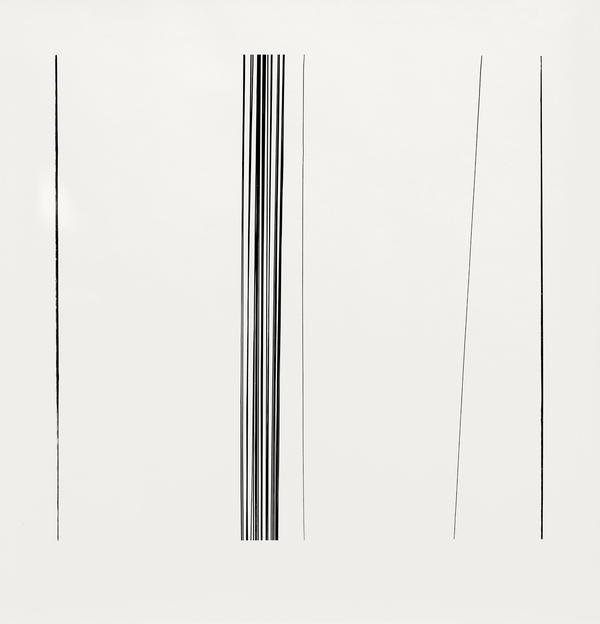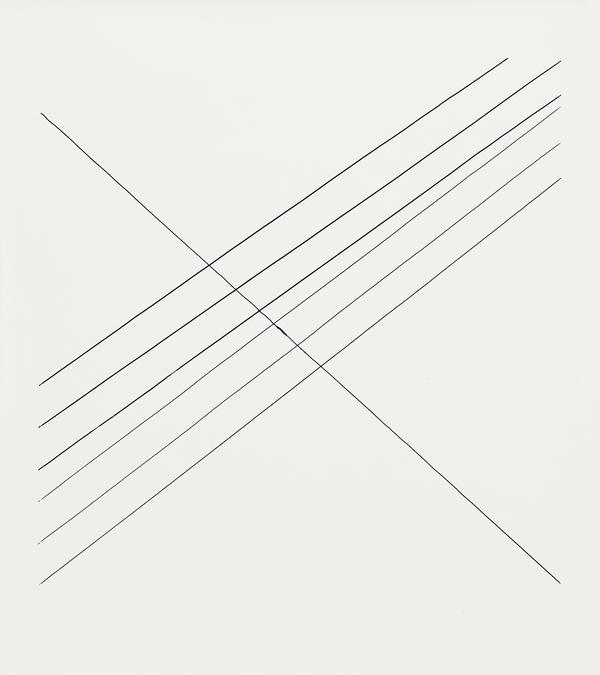It
22.04.2017 - 13.08.2017
It is the thirteenth exhibition held in the ex-kindergarten of Bruzella, home of the Rolla Foundation. The photographs are from the private collection of Rosella and Philip Rolla.
The exhibition, consisting of twenty-six photographs, is inspired by the writings of John Szarkowski, particularly from his book The Photographer’s Eye.
The selected photographers represent fragments of reality in a not purely descriptive way, giving the inanimate subjects a new vision, anything but banal.
The exhibited authors are: Harry Callahan, Hans Finsler, Arvid Gutschow, Ruth Hallensleben, Charles Harry Jones, Peter Keetman, Hannes Meyer, Irving Penn, Albert Renger-Patzsch, Luciano Rigolini, Thomas Ruff, Aaron Siskind, Franco Vimercati.

Charles Jones
Turnip, 1900 ca
vintage gold toned gelatin silver print
16.5 x 22 cm
Considered a great innovator of modern American photography, Callahan began as a self-taught photographer in 1938. In 1936 he was appointed by László Moholy-Nagy to teach photography at the Institute of Design in Chicago. In 1961 he moved to Rhode Island to establish a photography program at the Rhode Island School of Design until his retirement in 1977.
Born in Germany to a family of Swiss origin, after studying Architecture and Art History in Stuttgart and Munich, he became a professor at the School of Applied Arts in Halle. He participates in the main artistic avant-gardes of the period of the Weimar Republic, moving to Zurich in 1932, where he divides his time between teaching at the school of applied arts (Kunstgewerbeschule) and professional activity. The major post-war Swiss photographers were trained by him: Werner Bischof, René Burri, Peter W. Häberlin, Ernst Scheidegger, Emil Schulthess and Anita Niesz. In 2006, an important monographic exhibition at the Museum für Gestaltung in Zurich underlined his fundamental role in the construction of Swiss visual culture.
Growing up in a middle-class family in Hamburg he came into contact with the medium of photography at an early age through his father, a passionate amateur photographer. He studied law and later entered the civil service, taking photographs on the side. He was particularly interested in topics that he found in nature along the Elbe River and the North Sea, such as water, sun and sand.
Between 1931 and 1934 she worked as an apprentice for the famous portrait and landscape photographer Elsbeth Gropp. In 1934, she opened her own studio. After training in portrait photography, she took up her predestined role as an industrial photographer. Her work is not only a poetic vision or a technical experiment but is also a testimony to the historical period she lived in, Germany during the 20th century. Very little room is left to individualism in the name of a more global vision. In 1945, fearing that the allied forces would confiscate all her photographic equipment and archives, she put all this material in three boxes which she buried in the forest of Wiehl. Three years later, two of the three boxes were found with their contents undamaged and she was able to resume her photographic activity.
Although his father was a master butcher, Charles Harry Jones became a gardener. He worked on a number of private estates in England from the 1890s. As a photographer, Jones was noted for his documentation of the fruits of his gardening labours. Jones also offered his services as a photographer to other gardeners but his work was largely unknown even to his family, until the photographic prints were discovered by accident in 1981. Sean Sexton found a suitcase containing hundreds of prints of vegetables, fruits and flowers at an antiques market in London.
He was born in a very wealthy family became interested in the art of photography at an early age, thanks to his father, Alfred Keetman, a bank director. From 1935 to 1937 he attended the Bayerische Staatslehranstalt für Lichtbildwesen (later called: Staatliche Fachakademie für Fotodesign) in Münch. After graduating he became assistant to industrial and portrait photographer Gertrud Hesse in Duisburg and to industrial photographer Carl Heinz Schmeck in Aachen. In 1949 Keetman was a founding member of the avant-garde photography group fotoform and played a decisive role in determining the direction there so called subjective photography took.
Hannes Meyer was a Swiss architect, an exponent of the more politicized and functionalist wing of the Modern Movement. He was director of the Bauhaus and is best remembered for the design of the Petersschule in Basel and the design for the competition for the League of Nations headquarters in Geneva.
He grew up in a family of Jewish and Russian descent and was the younger brother of the famous filmmaker Arthur Penn. At eighteen, he enrolled in the drawing, painting, graphic and industrial arts course at the Philadelphia Museum School of Industrial Art. For four years he took the course taught by Alexey Brodovitch, editor-in-chief of "Harper's Bazar Magazine." In 1938 he managed to work as art director at Junior League Magazine. At age twenty-five he quit his job and left for Mexico where he began painting with the goal of becoming a painter. Here Penn travels extensively and falls in love with the landscapes of South America; it is at this juncture that he approaches photography.
He began taking photographs at the age of 12. After military service during World War I, he studied chemistry at Dresden Technical College. In the early 1920s he worked as a photographer for the Chicago Tribune before going freelance. Appointed professor and head of the department of pictorial photography at the Folkwangschule in Essen, he left the position after only two semesters because of Nazi oppression. Albert Renger-Patzsch is considered one of the most important figures of New Objectivity photography.
He studied film at the University of Paris VIII. In the early 1990s he attracted international attention with his Urban Landscapes. In 1995 he joined the documentary department of the European television channel Arte in Paris, where he was responsible for the creative development of art films until 2015. Since 2002 he has worked with photography exclusively through the appropriation and reinterpretation of amateur images and industrial documents. He has published several auteur books. He lives in Lugano, Switzerland.
German photographer who lives and works in Düsseldorf. He has been described as "a master of edited and reimagined images. In the summer of 1974, Ruff acquired his first camera and after attending an evening class in the basic techniques of photography he started to experiment, taking shots similar to those he had seen in many amateur photography magazines. During his studies in Düsseldorf and inspired by the lectures of Benjamin HD Buchloh, Ruff developed his method of conceptual serial photography. Ruff began photographing landscapes, but while he was still a student he transitioned to the interiors of German living quarters, with typical features of the 1950s to 1970s. This was followed by similar views of buildings and portraits of friends and acquaintances from the Düsseldorf art and music scene, initially in small formats. Ruff studied photography from 1977 to 1985 with Bernd and Hilla Becher at the Kunstakademie Düsseldorf (Düsseldorf Art Academy).
He growing up on the Lower East Side in New York City. Shortly after graduating from City College, he became a public school English teacher and practiced for 25 years. He began photography when he received a camera as a wedding gift and started taking pictures on his honeymoon. Early in his career, in the 1930s, he was a member of the New York Photo League, where he produced several significant socially conscious series of images. Later he focuses on the details of things, presented as flat surfaces to create a new image independent of the original subject. He was closely involved with, if not a part of, the abstract expressionist movement, and was close friends with painters Franz Kline.
After training as a painter at the Brera Academy in Milan, he cautiously approached photography, which he learned about empirically. From his first photographic experiments in 1968, a sequence of images related to the same object, the idea of seriality immediately emerges, which will distinguish his work over time. During his almost forty years of activity, Vimercati chooses to represent a few objects belonging mostly to his daily life, such as an iron, a jar, a glass, a tureen, a bottle... All simple subjects, which are, however, at the origin of a deep reflection on the meaning of vision and perception, and above all on the meaning of the photographic gesture.

Pages: 48 Softcover
Illustrations: 26 four-color print
Language: Italian/English
Edition: Fondazione Rolla, 2017




